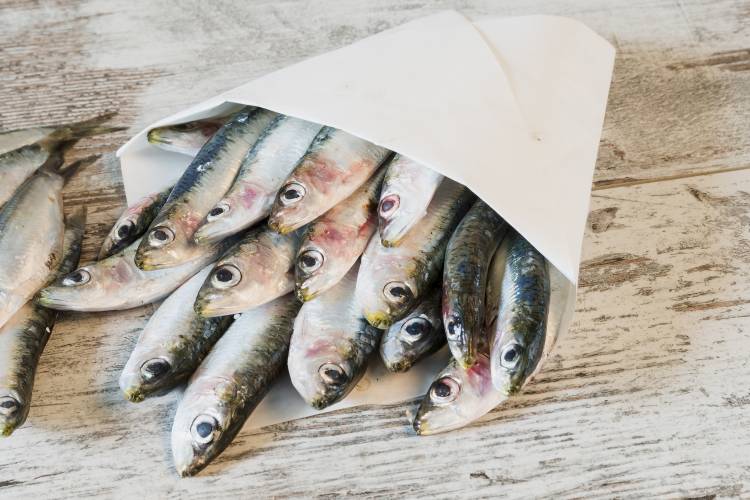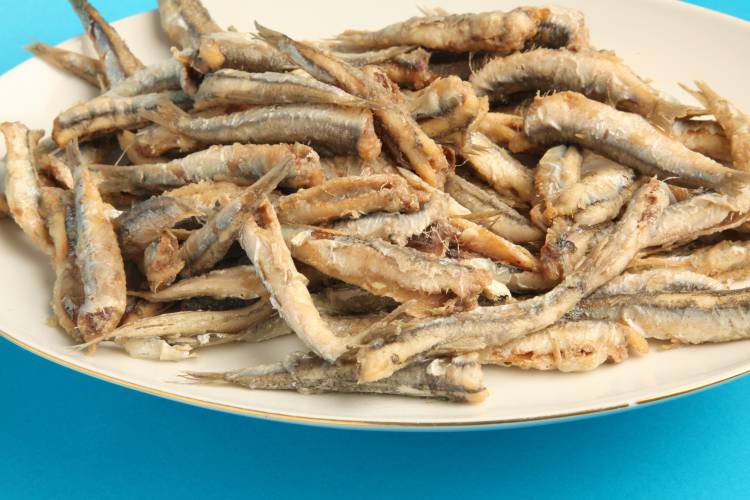Oily fish: Properties and list of species
Tuna, bonito, sardines, anchovies, salmon, herring, trout, mackerel... Oily fish, also known as oily fish, is one of the healthiest foods, thanks, among other things, to the rich supply of Omega 3 fatty acids it offers . We tell you what types of oily fish exist, as well as benefits and recipes to get the most out of them.
fresh food
Share

Blue fish properties
The blue fish receives this name due to the color of its skin, which has a bluish color. Usually, this type of fish resides in cold waters and consumes more energy to move, so it needs more fat to survive, unlike white fish. Next, we will talk about the different properties of oily fish and its differences with lean species.
- It is rich in proteins, vitamins and minerals: oily fish, like white fish, contains proteins of high biological value, vitamins A, B6, B12, D and E and minerals, making it difficult to define them . Unlike lean varieties, oily fish is richer in proteins of high biological value and minerals such as calcium or iodine. This is why its consumption is recommended for pregnant women and people with calcium deficiency. We tell you what proteins are, why they are so important for our health and which foods are richest in this nutrient.
- It has a higher content of healthy fats: unlike lean or white fish, oily fish has a higher content of polyunsaturated fats, such as Omega 3 acid. These types of fats are healthy and necessary, since, among other things, they help keep your heart healthy by reducing triglycerides and the buildup of fat in your arteries. The fat content of oily fish usually varies depending on the types of oily fish, but it is between 5% and 10%. In addition, having more fat contributes to oily fish being more satiating than lean fish varieties.
The fact that it has a higher content of polyunsaturated fats does not mean that it is fattening, since oily fish has very few calories compared to other types of animal meat, such as beef or pork.
How many times is it recommended to eat oily fish?
The benefits of oily fish are many and varied, so it is recommended to consume different types of oily fish between two and three times a week. It is best to combine oily fish and white fish to achieve a balanced diet.
Are you interested in discovering 5 healthy habits to keep your health in check?

Types of oily fish: list and recipes
Today there are many types of oily fish, below, we will discover 5 types of oily fish and we propose some recipes for you to bring out your most culinary side.
• Fresh tuna
Tuna is one of the most consumed blue fish in our country. Its nutritional composition, rich in omega-3, proteins, vitamins and minerals, make tuna a very beneficial food for our health.
We can find this blue fish, both fresh and canned. In addition, as it can be consumed in all its versions, tuna is a suitable fish to accompany a large number of dishes.
Would you like to discover how to cook tuna? We discover two delicious recipes.
• Sardine
The sardine is a blue fish widely consumed in our country due to its multiple properties and its affordable price. It is known as parrocha or parrotxa in Asturias and the Basque Country, sardiña in Galicia or panocha in Andalusia. A 200-gram serving of sardines covers almost the total recommended daily dose of omega-3 fatty acids. In addition, this type of oily fish is rich in vitamins and, above all, calcium, which is why it is a highly recommended food for pregnant women and people with a deficiency of this mineral. The sardine is usually marketed, above all, fresh and canned.
The sardine season is in summer, so it is a perfect food to enjoy in your summer barbecues.
• Anchovy
The anchovy is one of the most consumed oily fish in our country, both for its great versatility in the kitchen and for its good price. In addition, the anchovy stands out for containing multiple properties for our health, since, among other things, they stand out for their content of group B vitamins. Discover all the benefits of anchovies.
The anchovy can be purchased both fresh and canned, but above all, we can find it macerated in vinegar.
Would you like to discover how to prepare anchovies in vinegar?
• Salmon
Salmon is one of the healthiest foods in the world, as well as being very nutritious and tasty. It is an excellent source of vitamins B12, B6 and fat-soluble vitamins D and E, proteins of high biological value, essential fatty acids, minerals such as iodine, phosphorus, selenium and potassium. Its carbohydrate content is very low. Discover all the properties of salmon.
Salmon can be purchased both fresh and smoked, but it can be processed in multiple ways. Some of the most common are: baked salmon, salmon tartar or, raw and as the main ingredient of sushi.
Find out how to prepare a perfect maki-sushi.
How to cook blue fish?
Oily fish can be prepared in multiple ways, but since it is a fatty fish, the best way to cook it is one that does not add more calories to its preparation. Next, we offer you 3 healthy options to cook oily fish:
• Raw: when preparing a recipe with raw, smoked or pickled fish, it is very important to freeze the piece that we have purchased at the fish market for at least 24 hours. One of the best-known dishes made with raw oily fish is tartar, whether salmon or tuna.
• Baked: baking is one of the healthiest ways to eat fish. And it is that, in addition to admitting all kinds of varieties, in a few minutes, you can prepare a delicious, nutritious dish without added fats. Be careful, when you cook fish in the oven, always remember to watch the time and temperature of baking so that the oily fish does not end up too dry.
• Grilled: this is one of the healthiest ways to eat fish. Depending on the type of oily fish, you have to look at how to cook it. For example, if we grill oily fish fillets (such as salmon or tuna) it can end up being raw in the center. So that this does not happen to you, lower the temperature of the fire and turn the piece of fish repeatedly, in this way, you will ensure that it does not burn on the outside and remains raw in the center.

Market fresh fish!
From the sea to the supermarket in under 24 hours
Market fresh fish!






